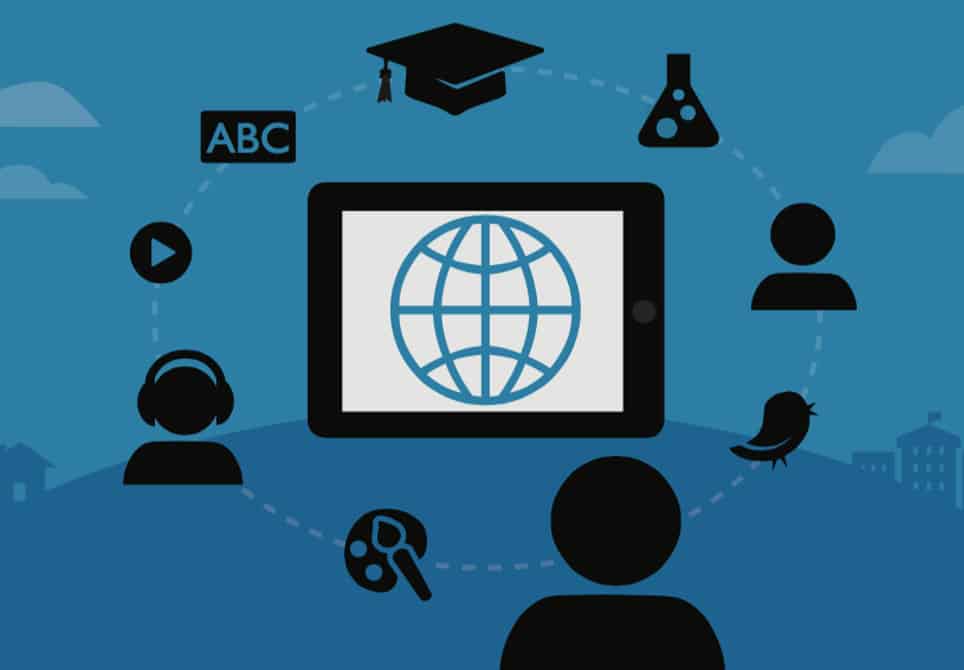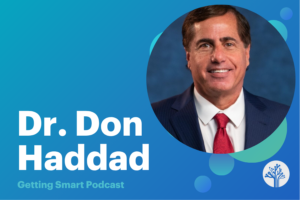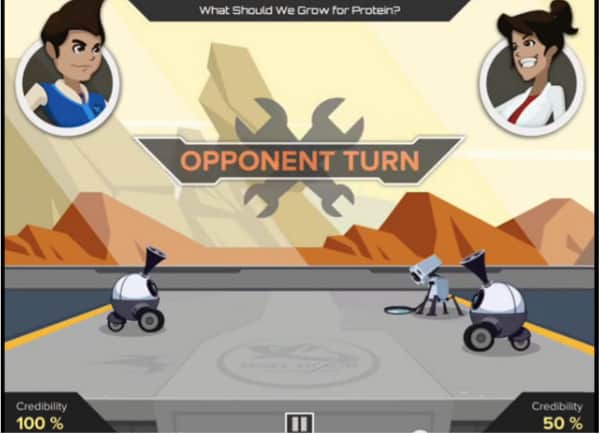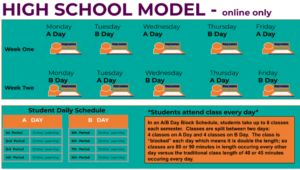The Shift to Digital Learning: 10 Benefits

The shift from print to digital is a profound transition in how human beings learn, it is more significant than the development of the printing press and its benefits are spreading much more quickly. Like the printing press six centuries ago, this transition is transforming formal education and spreading informal learning opportunities.
Digital learning is powering seven benefits that are changing the opportunity set for teachers. There are three additional benefits that are proving to be game changers for educators.
1. Personalized learning
The opportunity to help every student learn at the best pace and path for them is the most important benefit of digital learning. Hundreds of next generation schools are prototyping the benefits of customization.
A diverse group of 28 practitioners, advocates, and business and union leaders recently came together to reimagine education given the new opportunity of digital learning. They noted that personalized, relevant and contextualized learning can increasingly be tailored based on the learner’s own passions, strengths, needs, family, culture, and community.
One on one tutoring is a good example of personalized learning, but it is expensive. The shift to digital learning can approximate the benefits of tutoring while freeing up time for teachers to address individual and small group needs.
The opportunity to customize learning sequences for each student will make education more productive. Special needs will be more quickly diagnosed, learning gaps will be addressed, and progress will be accelerated.
2. Expanded learning opportunities
Digital learning is extending learning opportunities worldwide. Education Reimagined celebrates open-walled learning and acknowledges that, “learning happens at many times and in many places and intentionally leverages its expansive nature in the learner’s development of competencies. learners with authentic, rich, and diverse learning opportunities.”
Access to full and part-time online learning means that every student, state policy permitting, has access to many world languages, college preparatory curriculum, and advanced studies. It is remarkable that thousands of university courses by the best professors are available for free to anyone with a broadband connection.
3. High engagement learning
The shift to digital can boost student motivation. Anyone who has witnessed the engagement of game-based learning can appreciate the potential to create learning experiences that boost persistence.
Kristen DiCerbo, the lead at Pearson’s Center for Learning Science & Technology, is similarly passionate about the many possibilities that games offer education – better engagement, invisible assessment, deep learning,
High agency learning recognizes learners as active participants in their own learning and engages them in the design of their experiences and the realization of their learning outcomes in ways appropriate for their developmental level. Evidence that encouraging student agency will produce better learning outcomes is central to Most Likely to Succeed: A Film About What School Could Be.
In Getting Smart (2011), I argued that customization would lead to productivity (more learning per hour) and improved motivation would lead to more learning time each day and across each year. Next generation schools appear to be bearing out these predictions.
4. Competency-based learning
Students show what they know and progress based on demonstrated mastery. Competency-based learning is possible in paper and pencil (I saw it in Chugach Alaska in 1999) but it is hard to monitor and manage an individual progress model at scale.
Flex blends support individual progress. Dynamic grouping, workshops, and project-based learning can add lots of collaborative learning to an individual progress model.
Because competency-based learning changes everything about school, the transition from age cohorts to individual progress models will take longer, this is a generational shift.
5. Assessment for learning
Digital learning powers continuous feedback from content-embedded assessment, games, simulations, and adaptive learning. When students can track their own progress it can improve motivation and agency. Check out the Assessment for Learning project, grant applications are due by December 10, 2015
6. Collaborative learning
Digital learning powers collaboration. Social learning platforms like Edmodo make it easy for teachers to create and manage groups. Collaborative authoring environments like Google Docs make it easy for teams (near and far) to co-author documents and presentations.
7. Quality learning products
Digital learning tools allow students to produce professional quality products and to share them with public audiences. The journalism program at Palo Alto High School is a great example of what kids can do when empowered.
Presentation, publications, and portfolios change the classroom culture from turn-it-in, to production for public audiences. Digital tools means more and better writing.
8. Sharing economy
There has been an explosion of free and open content and tools. Schools can save money while ensuring equitable access.
Common standards and sharing platforms have made it possible for millions of educators to share tools and resources across state lines.
9. Relevant and Regularly Updated Content
Regardless of age or content, students have more access to relevant and regularly updated content. Next generation instructional systems that includes print and digital options with online adaptive skill building allow teachers and students to personalize in new and exciting ways. The ability to update easily, means access to updated material and features on a regular basis. As Mickey Revenaugh, Co-founder of Connections Education, and Director of New School Models at Pearson notes, “All of the users of Connections Learning and GradPoint courses — whether they’re studying 2nd grade reading or AP Calculus or something in between — benefit from real-time, dynamic updates of the content. In fact, the Connections curriculum team is constantly monitoring user feedback through the StarTrack five-star rating system to make incremental improvements on the fly that all users benefit from.”
10. Next-gen learning for educators
Blended, personalized and competency-based learning is for educators too! As discussed in Preparing Leaders for Deeper Learning, preparation and development are increasingly based on a competency map (what educators should know and be able to do), many personalized ways to learn, and multiple opportunities to demonstrate learning. Teachers can also join online professional learning communities, like Teachability, to ask questions and share tips and stay connected with a global community.
Digital learning is changing the world. It is connecting billions of young people to the idea economy. It is improving working conditions and career opportunities for educators.
For more check out:
- The Context-Driven Future of Learning
- The Future of Personalized Learning is Now
- A Year for Digital Learning Improvements
This blog post is written in partnership with Pearson Education as part of their Shift to Digital Learning Campaign. Learn how Pearson supports the digital transformation of education with online and blended learning, elearning, and digital solutions to improve results, by checking out their Shift to Digital Campaign page. Are you making the shift to digital? Tell us what it looks like in your schools by tweeting #ShiftToDigitalEd or show us on Instagram #IMadeTheShift
How are you Stay in-the-know with all things EdTech and innovations in learning by signing up to receive the weekly Smart Update.










Daren Mallett
Hey Tom, I love your post and have on-tweeted in on Twitter. Far from being a criticism, but more by way of a request. It would be awesome to re-publish this article with research supporting your ideas (and there are heaps). This is what is needed in blog-sphere, the integration of social and classroom based ideas with the research that supports their use. I'll be looking to write a very similar post to yours in this vein, but just thought I'd mention this to you in case it was an idea you had. Thank you for taking the time to write a very true, very relevant piece. I'll continue to share it in LinkedIn and Twitter as what you have said is spot-on. Twitter: @dazgm
Replies
Tom Vander Ark
The Learning Accelerator published a useful research compendium that lines up moderately well with these benefits:
http://learningaccelerator.org/media/12132951/BL%20Research%20Clearinghouse%201.0-050715%20(1).pdf
Dave Anderson
That is nice that with online learning and assessments, people can show what they know and their progress. It would be good to have an online team assessment and training for business. That is something I would want to have if I were running a business.
Dean Phillips
I thought it was interesting when you said that digital learning can lead to personalized learning for children. My son is going to be out of school for the summer in a few months. It might be a good idea for us to enroll him in some educational programs that are fun and educational for the summer.